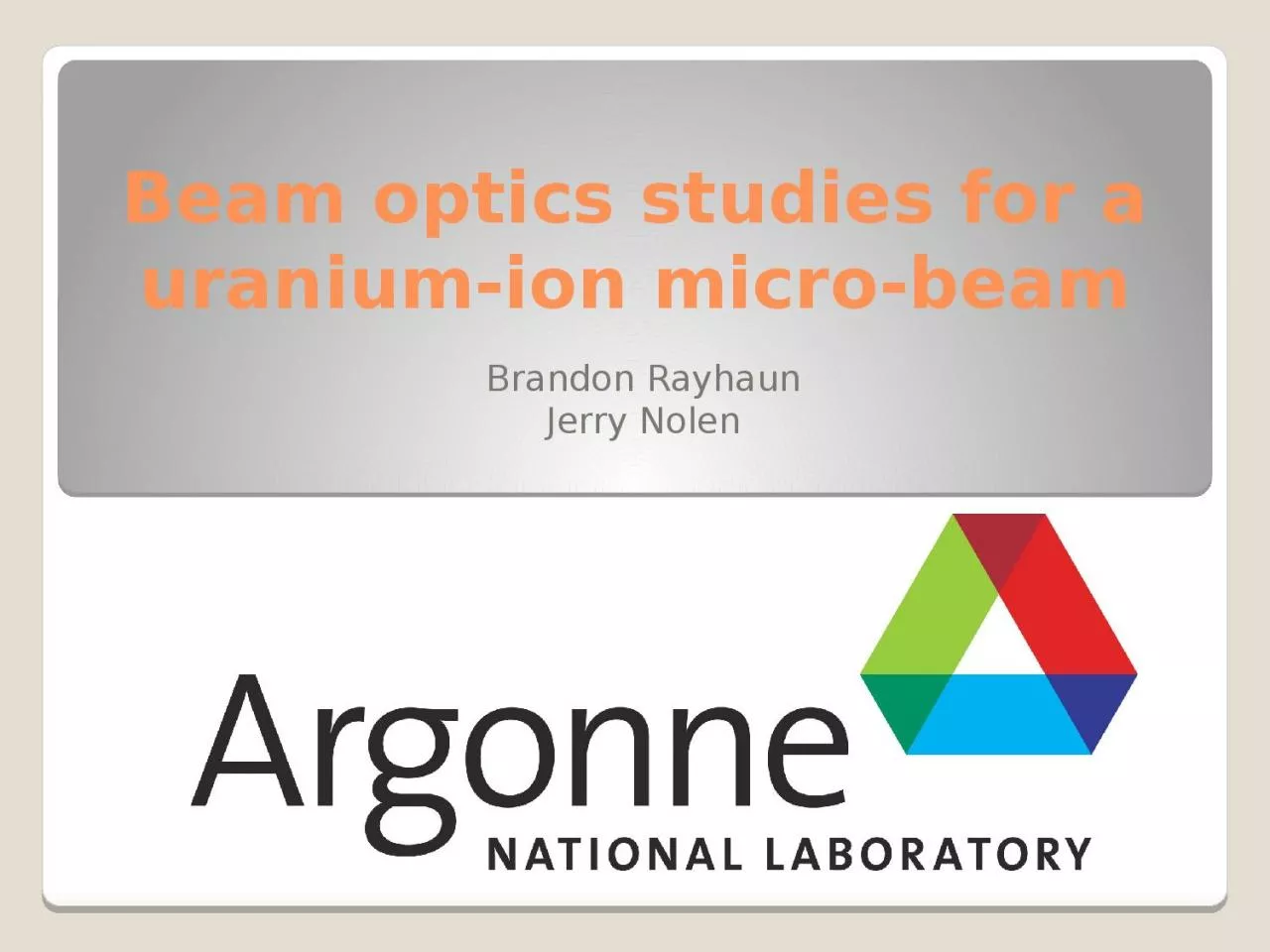

Brandon Rayhaun Jerry Nolen XMAT Facility Located at the APS Combines hard Xrays from APS with energetic heavy ion irradiation for purpose of studying materials science Applications Primarily studies effects of damage to fuels and cladding in nuclear reactors ID: 1032014
Download Presentation The PPT/PDF document "Beam optics studies for a uranium-ion mi..." is the property of its rightful owner. Permission is granted to download and print the materials on this web site for personal, non-commercial use only, and to display it on your personal computer provided you do not modify the materials and that you retain all copyright notices contained in the materials. By downloading content from our website, you accept the terms of this agreement.
1. Beam optics studies for a uranium-ion micro-beamBrandon RayhaunJerry Nolen
2. XMAT FacilityLocated at the APSCombines hard X-rays from APS with energetic heavy ion irradiation for purpose of studying materials science
3. ApplicationsPrimarily studies effects of damage to fuels and cladding in nuclear reactorsNew materials synthesis, predictive modeling, accelerated ion-beam testing, simulation validation, X-ray scattering, etc.
4. Accelerator DesignIon beam is focused by magnets to deliver high flux of irradiation onto sample (10 micron beam size) Damage is imaged over time with photons from APS
5. Magnetic Optics
6. MATLAB vs COSYCOSY InfinityProsBased on FORTRAN—fast for scientific computingDifferential Algebraic algorithms generalize matrix methods to higher than linear order maps for entire system, which can then be intuited from coefficientsConsUnclear whether integration routines accurate enough to achieve micron level precisionMATLABProsComplete control over accuracy of computationEllipric integral formulation provides neat, exact, closed form for computation of B fieldsConsSignificantly slower
7. Design ConsiderationsCostDimensions and strength of solenoid vs control of aberrationsLengthOverall system should occupy relatively small spaceSample distance from solenoidsSample should be sufficiently far from magnetic fieldsRetain beam
8. Summary of ResultsVerified DA (COSY) and EI (MATLAB) produce same B fields to 10-4 TVerified DA and EI methods produce same particle trajectories on order of 1 micronDetermined most significant aberration effects (a3 and aδ) lowest order geometric and chromatic aberrationDetermined acceptance of divergence (~2 mrad) and energy spread (+/- .1%)
9. AcknowledgementsJerry NolenBrahim MustaphaEric PrebysLinda SpentzourisKevin CookArjunHuy